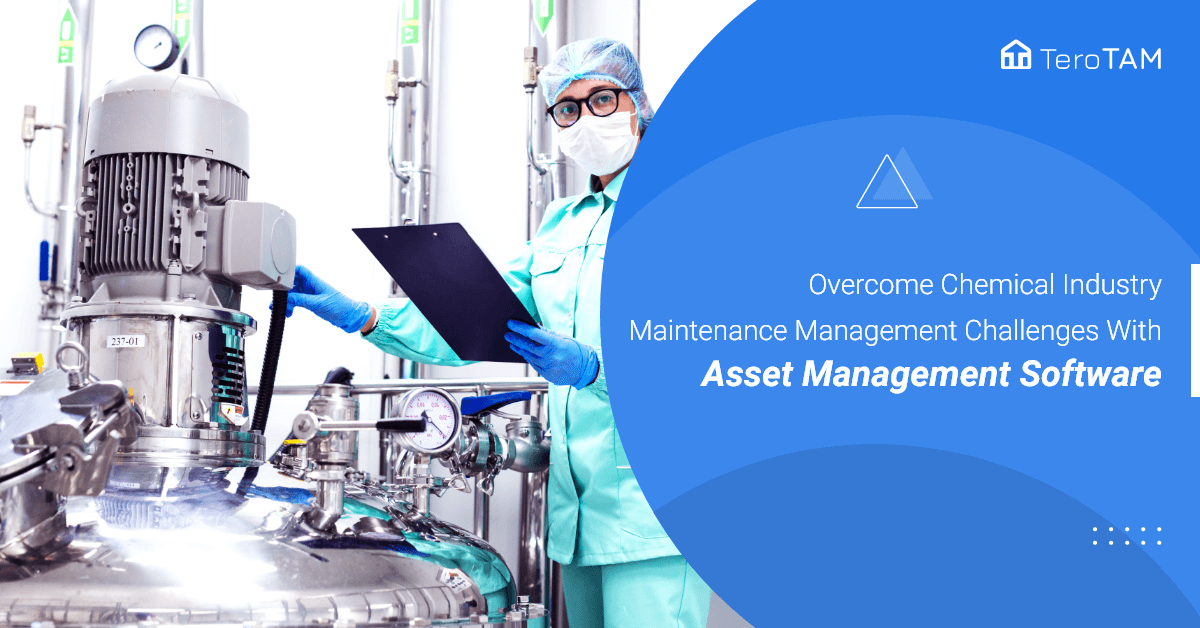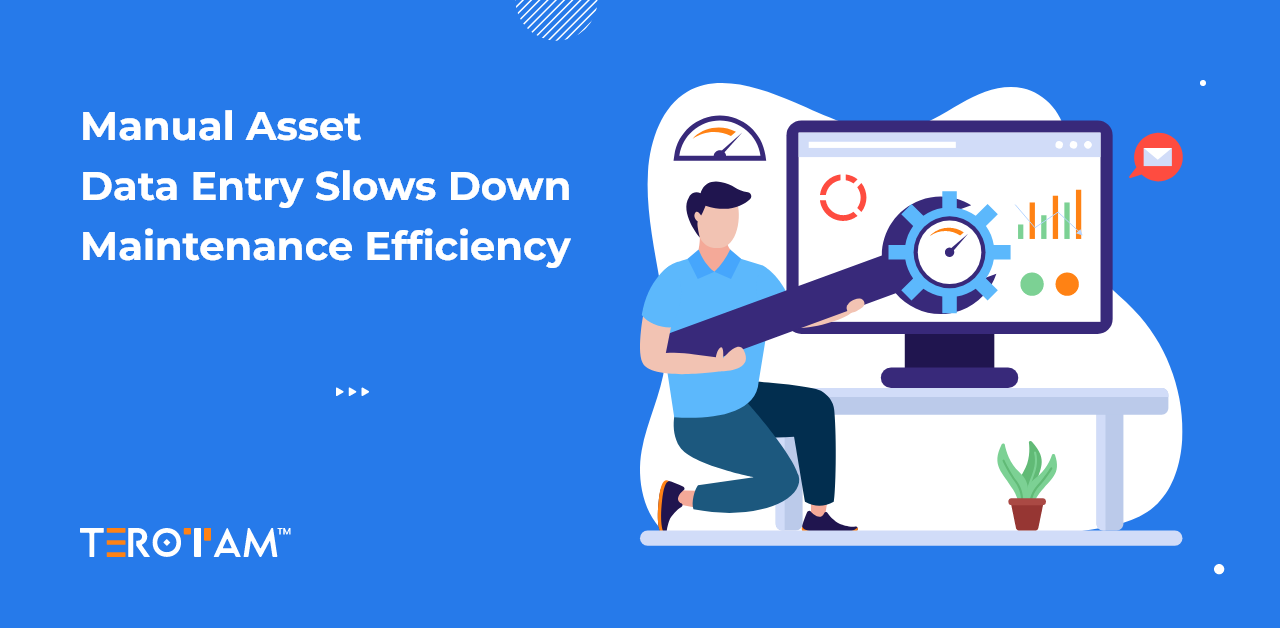The lifecycle management of assets is a challenging procedure in the global chemical production sector. The management of asset data, which is frequently spread across numerous systems in a business, is a challenge for many. This has caused delays when it comes to locating, using, and altering engineering data when circumstances develop that call for immediate plant alterations.
Asset management solutions for Chemical Industry are crucial since the chemical engineering sector depends substantially on the effective management of its industrial facilities and fixed assets. These instruments not only increase the dependability of machinery and equipment but also maximize asset utilization, helping organizations cut expenditures on asset-related maintenance and insurance by thousands of pounds. This makes it crucial to maintain chemical equipment as well as increase its reliability. assisting in maintaining assets in top condition for as long as feasible. Utilizing digital tools and technology, such as asset management software, is the most effective approach to do this.
In this article, we are going to take a quick look on what are the asset management challenges chemical companies go through or usually face and how come the asset management system can help them to solve them in the best of its manner. Let’s get started.
Why is Asset Management Software needed in the Chemical Industry?
Chemical manufacturers must contend with issues like severe government restrictions, safety standards, and ongoing R & D. Additionally, chemical companies must contend with rising logistical expenses, high electricity and fuel prices, high operational and maintenance costs, and so forth. Additionally, processes in the chemical industry are intricate, entail numerous workflows and procedures, and draw on a wide range of software and databases. As a result, these chemical sector manufacturing businesses confront the following issues.
1. Unplanned Downtime Due To Paper-Based Work Orders
Whether proactive, prognosticative, or reactive, effective team collaboration is essential for chemical plant maintenance. The production of work orders is delayed by conventional paper-based procedures, and asset managers find it more difficult to monitor the status of these orders in real-time.
In well-run chemical companies, no maintenance repairs take place without a work order. A manager or supervisor issuing a work order, nevertheless, can’t always guarantee a seamless workflow. The work order system is still mostly paper-based in many chemical plants. The maintenance system is more difficult than it needs to be because of paperwork orders. They:
- Slow down the work itself
- Once issued, keep decision-makers in the dark
- Add additional value-less chores.
- During an emergency, these issues are amply made evident. Time, quickness, and clear communications are crucial at that point.
2. Updating Equipment
Equipment, parts, and procedures may lag behind best practices as a result of constantly changing technology and trends. You need to be able to maintain and repair outdated components of your production line until you have enough money to replace the hardware.
Equipment update is an activity in which you need to constantly monitor, collect data, analyze the data, take feedback, study the breakdowns and causes and make the data-driven decision. All these things need a proper system that gives timely and accurate data to the decision-maker. The lack of such a system is making the asset updating process delayed and difficult.
3. Increasing Production Uptime
You can never predict precisely which components will fail during production. A pipeline pressure spike could cause a seal to fail months earlier than predicted. If you are unable to swiftly stop a shutdown due to missing certificates, untested spare parts, or both, your TCO suffers even more.
Predictive maintenance systems monitors can be fitted in many chemical units to alert them of impending replacements before they become critical. The ordering processes can be made simpler by consolidating your suppliers, giving you a clearer picture of your stock management.
4. Inventory management of Costly and Hazardous Chemicals
When it comes to Chemical Industry, the biggest concern that comes in place is the safe storage and management of hazardous chemicals that it uses. If not properly stored and managed, frequent accidents can take place within the plants. Also, such chemicals are high in price. If not stored and managed properly, it can keep costing the organization due to its waste and improper usage. Missing a proper inventory management system is therefore one of the biggest challenges within the chemical industry.
5. Procurement Delays and Inaccuracies
The absence of a proper inventory management system can’t let the procurement department make timely and accurate decisions on ordering what type of chemical, at what time, and in how much quantity from which supplier gives them it in the most cost-effective manner. Due to that, the manufacturing process suffers from stock-out positions as there are procurement delays and inaccuracies.
6. Incapacity to Recognize and Monitor Assets and their performance
Not recognizing the asset you have is an even better challenge that can cost you with duplicating the asset procurement or sometimes due to non-recognition of a specific asset, manufacturing takes place without some special equipment that touches the accuracy level in a negative way.
Top 5 Benefits of an Asset Management Solution for the Chemical Industry
1. Agile and Responsive Manufacturing
Thanks to asset management software, chemical manufacturers can be more adaptable to the supply chain when the demand changes. All parties involved in the supply chain networking can access updated or modified production plans, which enables them to modify their manufacturing in real-time.
This is based on exact sales and marketing actions that can aid in manufacturing decision-making. In the chemical business, the ability to modify formulas or manufacturing processes quickly and easily is a crucial requirement. With the help of real-time information, the asset management tool provides improved synchronization, more reactivity to changes made, fewer errors, and less time wasted.
2. Greater Inventory Management
You need to employ quality control data, expiration dates, traceability data, and other data pieces to create the best inventory control. The asset management system has access to all warehouse and shipping locations, making it easier to manage locations, and other operations, as well as automating the linking of quality control data with lots and batches.
This connection can be strengthened to connect all the information acquired to the supply of raw materials, which further results in a chain of gathered information able to trace all inputs to their apps and the locations of end users. This also facilitates rapid problem-solving in the field and enhances product traceability.
Asset management solution, to put it simply, assist you in keeping track of inventory based on licenses, and attributes such as potency, item, lot number, warehouse, status, UOM, location, and so on. Inventory management is made simple by adding that and transaction processing that is compatible with mobile devices.
3. Better Organizational Interaction
There are cross-organizational advantages when an asset management solution connects every department in a business. It is more effective to integrate numerous tasks with key stakeholders, including vendor evaluation and monitoring, contract management, invoicing, material procurement, and catalog creation.
This provides you leverage when it comes to purchasing and helps you build solid relationships with suppliers, enabling you to negotiate cheaper costs for procurement and purchase.
4. Greater Supply Chain Efficiency
By working closely with supply chain participants, improving the efficiency and visibility of the supply chain, and concurrently lowering inventory costs, you can reduce the time it takes for cycles to complete.
Utilizing an asset management technology can help you manage raw resources strategically, lower expenses, cut down on waste, and ultimately increase profitability. Since you will be able to better predict supply and demand, you may even be able to lower the amount of working capital needed.
5. Asset Tracking and Performance Analysis
All firms with several teams and extensive SOPs need to track asset operations; an asset tracking solution will make it simple to do so from a single dashboard. Business analysis is a crucial component of business since it enables you to determine which methods are effective and which are ineffective as well as where you can make changes.
Wrapping it up
It can be difficult to locate and select the ideal asset management technology for your chemical industry company. You should choose a solution that is ideally suited for your chemical plant rather than a product or supplier that promises to provide the “greatest” gadgets.
To discover the best asset management software, you must first determine what your needs are precise. To get more insights and help in deciding what your chemical business needs within the asset management solution, connect with our experts today at contact@terotam.com or schedule a quick appointment now.








